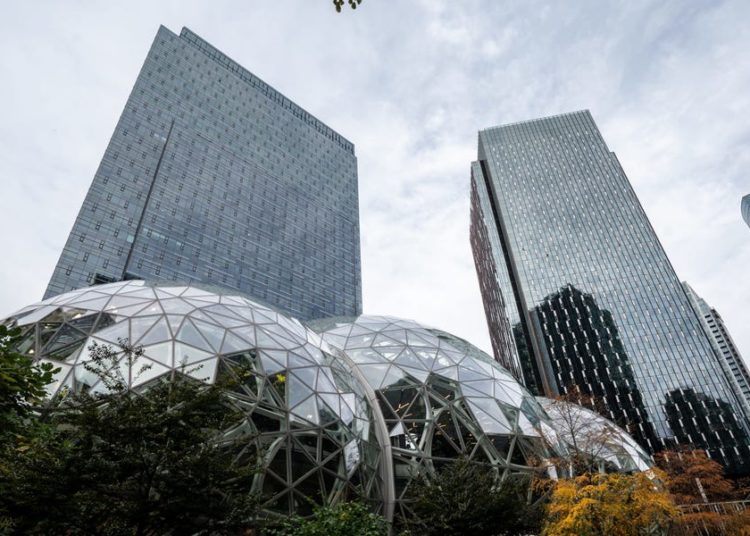The theater held a palpable charge the night “Anemone” premiered late last month at the New York Film Festival. When the credits ended, the audience sat seemingly in stunned silence. Then a spotlight swept toward the balcony, and there stood the film’s star, Daniel Day-Lewis, alongside his wife, filmmaker Rebecca Miller, and their son Ronan Day-Lewis — director of “Anemone.” The crowd erupted — elated to witness one of the greatest actors of our time step out of retirement to embody a role in his son’s directorial debut. That moment carried a reminder of what cinema truly is: the human presence of artists who risk themselves before us.
That same week brought a very different kind of unveiling. Particle6, a U.K.-based company, introduced Tilly Norwood, the world’s first AI “actor,” which has already garnered interest from talent agencies. Tilly is not a person, not a performer, not even a flawed human being struggling toward art. It is a coded composite, a computerized ideal of cinematic beauty. It can be programmed to pout and cry but never to feel.
The contrast could not be clearer. On one side is Day-Lewis, embodying a role that carries the weight of decades of human experience and on the other is a simulation designed to approximate star power without ever touching the messy, unrepeatable humanity that gives cinema its soul.
The best actors carry a kind of magic that reaches into us and transcends the silver screen. There is a symbiotic relationship between actor and audience, a current of feeling that passes between the performer’s risk and the viewer’s recognition. As a lifelong cinephile who grew up watching movies, I know that spell well. It is the reason we gasp when a line cuts close to the bone, the reason we rise to our feet when an actor brings us somewhere we didn’t know we could go.
The night of the “Anemone” premiere, before the lights went down, I had chatted with fellow filmgoers who were gushing about Day-Lewis’ unforgettable performances in “My Left Foot,” “There Will Be Blood,” “In the Name of the Father.” His superhuman talent is special because he is, at the core, human.
Great actors make us feel more deeply. We walk out of a theater or even rise from our sofa feeling more connected to others in our lives, carrying greater empathy for other human beings.
I know this from personal experience. I grew up in a foster home in the San Fernando Valley. One of the first films I ever saw at a local cinema was “My Left Foot.” As a teenager and later as a young adult, I looked to actors like Day-Lewis for inspiration. His performances instilled hope and helped me imagine a life beyond my circumstances. That is what great actors can do. They not only move us in the moment but inspire us to endure, to dream, to believe in our own humanity. An AI program, however sophisticated, cannot do that.
Supporters of Tilly Norwood describe it as the future of film because it is controllable, tireless and freakishly forever young. Those very traits reveal the problem. Real performances carry with them a beautiful imperfection, and it is within this often messy mortality that they feel truly alive. An AI version can be endlessly re-rendered until it is flawless and lifeless.
An actor is an artist. An AI “actor” is an asset. Tilly is designed to “perform” only what its programmers and managers decide. It has no agency, only branding. SAG-AFTRA has already warned that AI models are built on the backs of countless human performances, without consent or compensation — which of course is not true innovation but a kind of creative thievery.
There is also the danger of sameness. Hollywood once celebrated distinctive faces and presences: Peter Lorre with his haunting eyes, Dustin Hoffman with his unconventional magnetism, Robert Redford with beauty that never obscured his human complexity. To replace this with a polished composite is to flatten the art form into blandness.
Technology has always had a place in film — which was itself a technological leap to bring performances to audiences far and wide. CGI, motion capture and visual effects have enriched stories, creating worlds that could never otherwise exist. That’s where we should draw the line: embracing the technologies that serve the storytellers, not those that replace them. Cinema is not a video game populated by avatars; it is a medium of imagination grounded in human imperfection. If we lean too far into synthetic actors, we risk training audiences to settle for surfaces, for simulations of feeling rather than feeling itself.
Audiences continue to prove that they crave human presence. Streaming may have emptied theaters, but every so often a film breaks out, and crowds gather for the shared experience of something alive. I felt it in that New York auditorium, when the spotlight revealed Daniel Day-Lewis and the audience roared. The applause was more than appreciation for a movie. It was the collective gratitude for the privilege of witnessing a human artist take risks.
That is what cinema is all about, an indefinable presence, faces full of expression, voices that cannot be easily replicated, eyes that channel energy that can move and frighten and surprise us. If the industry hands itself over to AI actors, it will turn away from the very thing that keeps audiences coming back. The result will be an art form emptied of talent, emptied of feeling and frighteningly unhuman. That is why the line must be drawn now. Hollywood cannot delay this conversation; the future of cinema depends on protecting its humanity.
Leslie Vooris is a New York-based writer, filmmaker and advocate for foster youth.
The post Contributor: It’s not acting if it’s just one AI avatar talking at another appeared first on Los Angeles Times.



